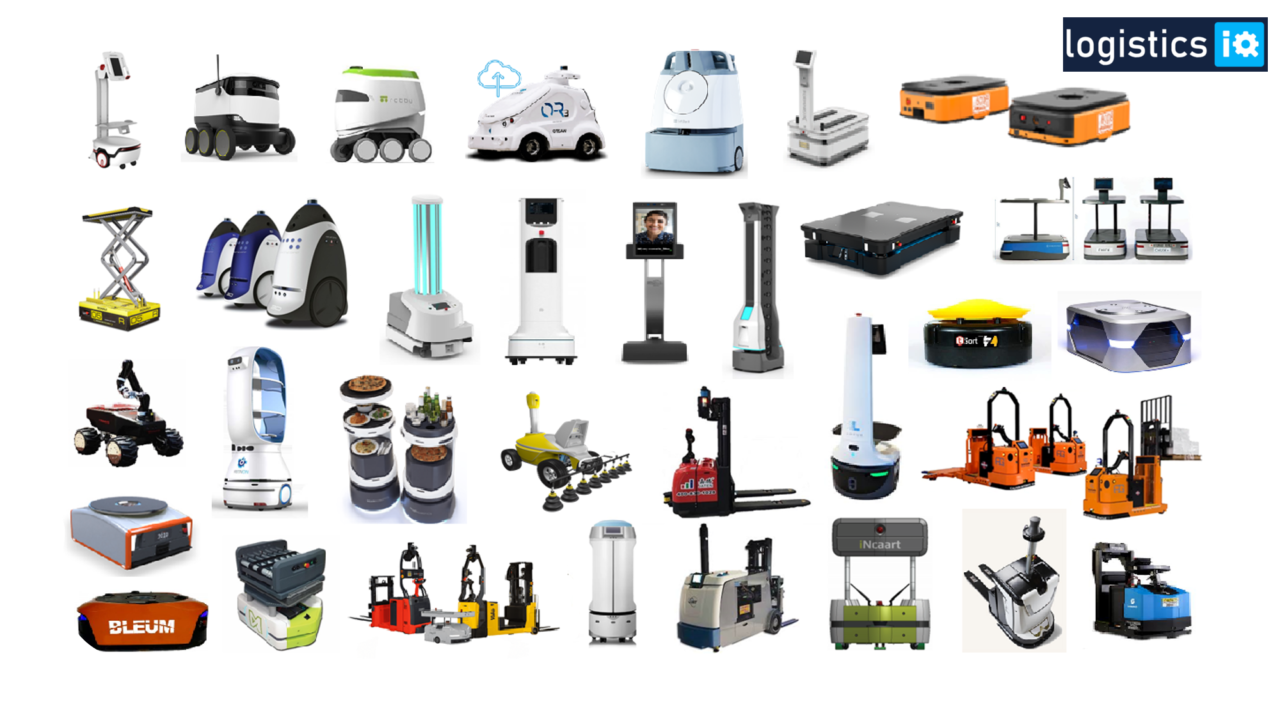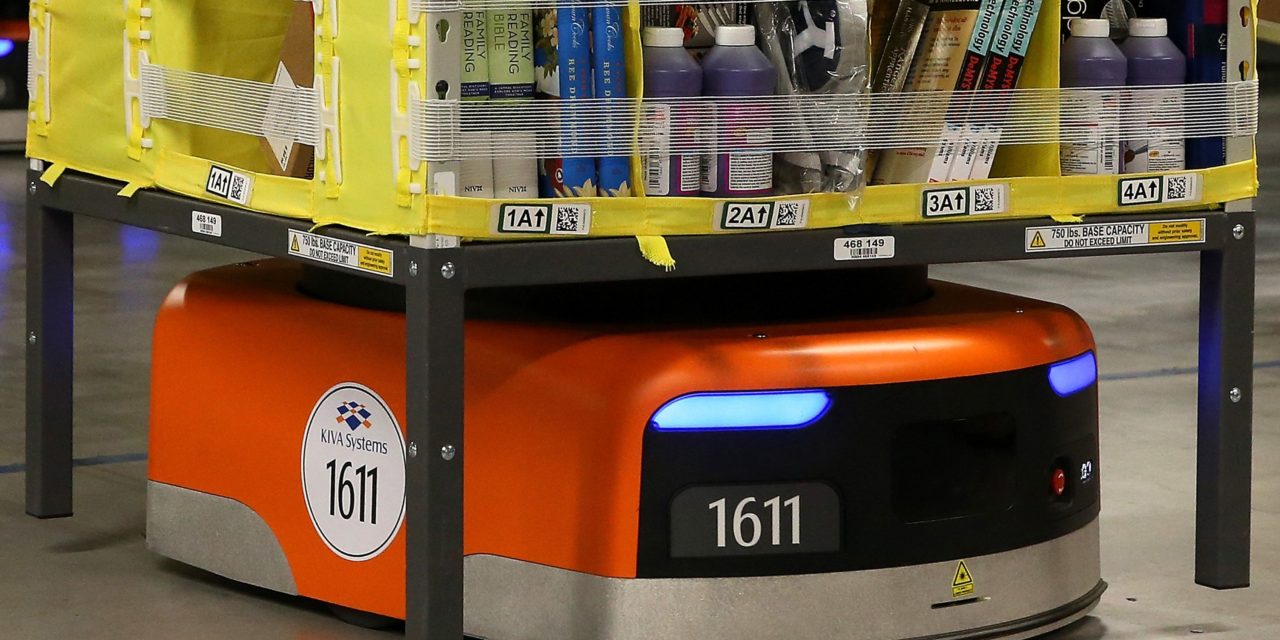
CLICK HERE FOR LATEST MARKET RESEARCH ON AGV-AMR MARKET – OPPORTUNITY WORTH $18B
Kiva’s robots and inventory management system were disruptive technologies in 2011-12 and it was on its peak when Amazon acquired the firm for $775m. Amazon rebranded it as Amazon Robotics and strategically withdrew Kiva robots from general sales to maintain and develop its advantage. That is why Amazon is ahead of 12-15 months as compared to any of its competitor in the Retail sector as far as warehouse efficiency and effectiveness is concerned. At present, Amazon has deployed more than 100,000 mobile robots to handle its daily operations. If we consider the average price of a mobile robot at $30000 then it automatically let us know the importance and significance of this $775m invest for AGV AMR Market from Amazon.



At the same time, it created an opportunity for other players in the market to innovate a similar but new product for other warehouse end-users as well. Companies like 6 Rivers Systems, Fetch Robotics, Lucas Robotics, Magazino, MiR, I Am Robotics, InVia Robotisc, etc. launched their own AMR (Autonomous Mobile Robots) including pick assistance facility with the help of LiDAR and Cobots. On the other hand, players like Geek+, Grey Orange, Quicktron (Flashhold), HikVision, Swisslog, Scallog, etc. had a similar product like Kiva Robotics to accelerate the market.




Apart this, we have also seen some new technology innovations like Automated Storage and Retrieval System (ASRS), Automated Guided Vehicles (AGVs – working with other navigation methods like Optical Tapes, Sensors) and Picking Systems (Pick by Voice, Pick By Vision, Pick by Light) to make the warehouse more effective so that customer expectation to deliver the product within 24 hours can be met.

ASRS

AGV

Pick to Light
As per LogisticsIQ™ study on AGV and AMR Market – 2021, AGV/AMR market is expected to reach ~$18B mark by 2027 including all applications like Logistics, Manufacturing, Healthcare, Shipping, Disinfection, Retail and Inventory Management, Security and Inspection, Agriculture, Hospital Assistance, Indoor and Outdoor Delivery, Cleaning, Tele-presence and Tele-operation, and Data Platforms & Remote Sensing. AMR (without any external support of optical tape, sensor or vision) is going to be main contributor in retail warehouses due to high demand in e-commerce sector and its flexibility to deploy the robot without any major change in the existing warehouse infrastructure. However, it is a bit slow in terms of pick rate per hour as compared to ASRS but is preferred in small and medium warehouses due to lower cost and quick deployment.
It is expected that it will help the companies to lower down their increasing labor cost. It is getting popular in countries where LPI score is high but there are some exceptions like China where demand is too high due to e-commerce wave and disruption in the Automotive and Manufacturing Sector. Quicktron, HikVision, and Geek+ are leading the market in China and has more than 80% market share in AMR space at present.
As per our initial discussion with different suppliers, there are mainly 3 business models for AMR
- Direct Buy: End-customer is doing the due-diligence at its end with the help of consultancy or advisory parties to analyze the requirement and is approaching the supplier directly to buy the AMR/AGV.
- ROI can be expected in a shorter time as compared to other models
- Maintenance/services cost must be added as a part of OPEX
- Employees need to be trained to perform the function and monitoring part
- RaaS – Robotics as a Service: End-customer can lease the product/equipment and can contact System Integrators to deploy the robot as a part of Monthly expense.
- No Capex required. It can be taken care as a part of OPEX
- ROI might be achieved in a long timeframe
- Employees need to be trained to perform the function and monitoring part
- PPP – Pay Per Pick: In this model, end-user is charged based on the # items picked or # picks. It is linked with the performance of leased product or equipment.
- ROI cannot be analysed as it may vary as per the efficiency of the product
- Fully Managed solutions including optimization, maintenance and engineering support
- Overall costlier as compare to other models but can be good move for newcomers and SMEs
Considering the challenges of the current market scenario including high customer expectations, players don’t have any other option left than deploying these disrupting technologies in their warehouses and fulfillment centers to be part of this race. In the last 2-3 years, more than 30 young companies have been started including a fund raised of approximate $350M. in 2017, $178M fund was raised for AMR/AGV start-ups and is expected to more than $200M for 2018-19.
The low labor cost in emerging countries and real-time technical challenges may create more problems for the manufacturers in the AMR/AGV market. Dematic-KION, Swisslog-KUKA, Vanderlande-TICO, Seegrid Corporation, Quicktron, HikVision, Murata Machinery, Elettric80, and SSI Schaefer are among a few major vendors in the AGV/AMR market as far as complete Warehouse Automation solution is concerned.
Kindly refer our latest study on AGV-AMR Market and Warehouse Automation Market for more details.
